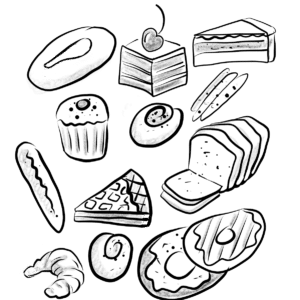
How Going Gluten-Free Transformed our Home
Hi, I’m Melissa, Beth asked me to explain how going gluten-free made a difference in our household. I have a
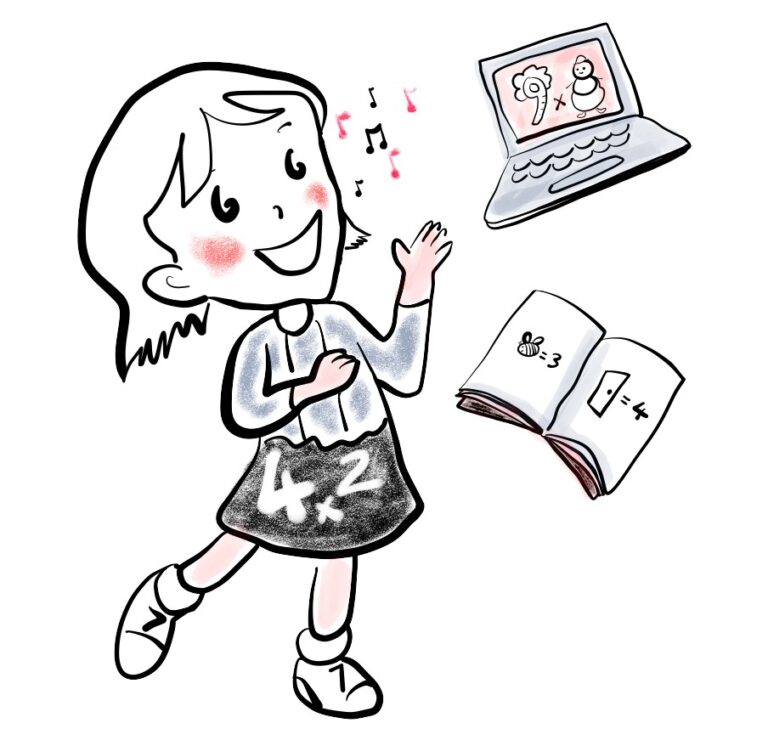
In a school staffroom, I heard a teacher say to a colleague, “How hard is it for a child to remember their multiplication tables? If they just practised for five minutes a day, they’d have them in no time.”
Despite being in the school to teach creative writing, not maths, I felt I had to respond, so I mentioned how helpful multiplication stories are for children with dyslexia. I know from experience it is almost impossible for a dyslexic child to pick up the multiplication tables by rote memorisation. I tried this approach for years with my son, Harry, and got nowhere.
In my book, I share a quote from Marie Rippel, who explains that the brain must connect with what it already knows to retain information.
“Hang on,” I hear some people cry. “I’m not a teacher. Why should I work on the tables with my child?”
Of course, you can hope your son or daughter will learn their tables at school. Most children will. However, those with dyslexia may not. Working with your child at home supports what they are learning in school. A friend, a primary teacher, said most of her pupils learn their tables with help from parents as the time to work on them in class is limited. Helping your child learn their tables is not difficult once you understand their need for visual anchors.
Before you begin, it is worth spending some time manipulating bottle tops or counters into groups on a table to check your child understands what multiplication means. Teachers call this arrangement of objects into rows an ‘array’. It helps to use the term ‘groups of’ or ‘rows of’ instead of ‘times.’
Make five rows of four counters.
Point your finger along the rows to show five rows of four makes twenty. 4+4+4+4+4 =20.
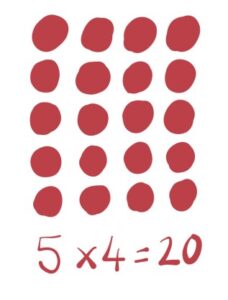
Then rearrange the counters into four rows of five.
Again, run your finger along the rows to show four rows of five also makes twenty
5+5+5+5 =20.
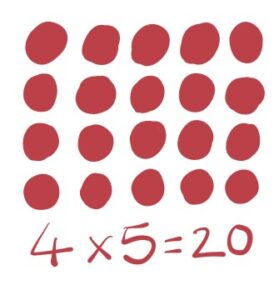
Don’t rush this step. Use counters to make different rows, such as 2×4 and 4×2, to check they understand the concept.
If your child struggles to grasp this, they may have dyscalculia. For signs of dyscalculia, check out my post here.
Harry is a picture thinker, as are most people with dyslexia. I was delighted to find a resource on multiplication.com which uses pictures and stories to teach the times tables. Stories may seem like a complicated way to remember the tables, but trust me, once your child has the story in their head, they will retrieve the answer quickly.
In this method, a picture represents each number:
The story is about two numbers interacting. For example, 2 x 8 is a shoe and a skate. In this story, a queen wearing one shoe and one skate spins around until she is dizzy, i.e. she becomes a sick queen.
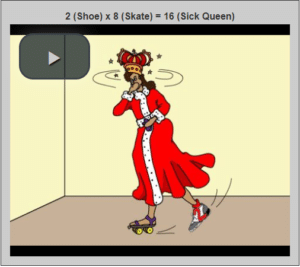
When I taught my son his tables, I read him each story and showed him the illustration to help him visualise the answer. The pictures anchored the multiplication facts in his brain.
The multiplication.com website offers several options for games, books, and resources. However, at the time of writing, you can see these stories for free. To find them, follow this sequence:
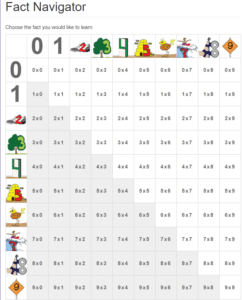
Don’t teach more than one set of multiplication tables at a time, i.e., only when your child can tell you all the stories for the 2s should you move on to the 3s.
On multiplication.com, there isn’t a story for the 10-, 11- and 12-times tables because the 10 and 11 are easier for children to remember (see tricks below), and in countries that use metric measurements, there is less necessity for children to know the 12 times table.
4 x 10
Write 4 and then put a 0 after it.
4 x 10 =40
4 x 11=44
For 11 x 11, add the outer digits to make the answer’s middle digit. 11 x 11=121
You can find another story-based approach at https://www.timestales.com/
I haven’t used their stories, but the principle is like multiplication.com.
I can’t promise stories will work for your child, but if they do, I know you’ll be thrilled.
Online, I’ve seen parents recommend the multiplication games found on filefolder.com. These multiplication games also use pictures, but they expect the child to have some knowledge of multiplication tables. I suggest you play these games with your child once they have learned the multiplication stories.
In primary school, I learned the alphabet using a song, and it worked, but I still go through the entire song to find where a letter comes in the sequence.
Songs are great for reinforcement, but a child with dyslexia won’t be able to pluck an individual multiplication answer, such as 5 x 6, without singing the whole song. However, they will achieve this if they learn the story for each multiplication.
To read how to teach spelling and reading in 30 minutes a day, click here.

Hi, I’m Beth. Seven years ago, when I discovered my son had dyslexia, I had a ‘light-bulb’ moment and understood this explained many of my own difficulties. Ever since, I’ve been on a mission to discover the best ways to wrestle what I like to call the dyslexia octopus.

Hi, I’m Melissa, Beth asked me to explain how going gluten-free made a difference in our household. I have a
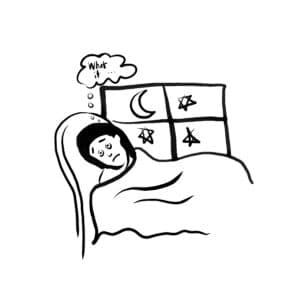
I need nighttime anxiety relief. It’s 4 AM, and I’m reviewing what happened to Harry at school yesterday and wondering